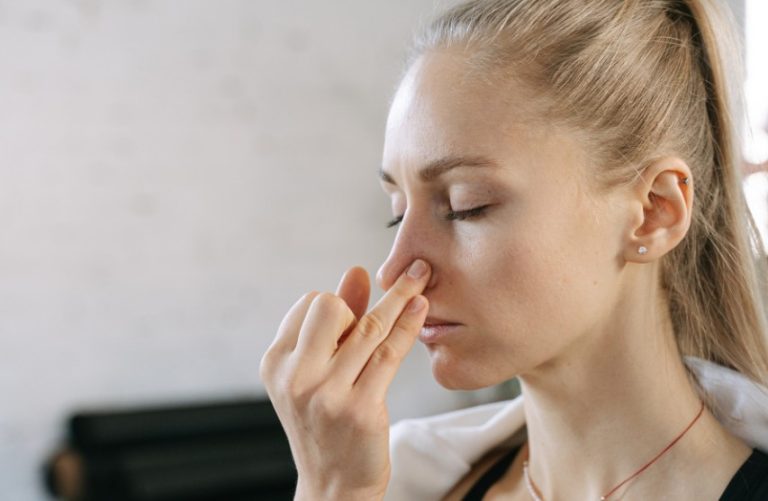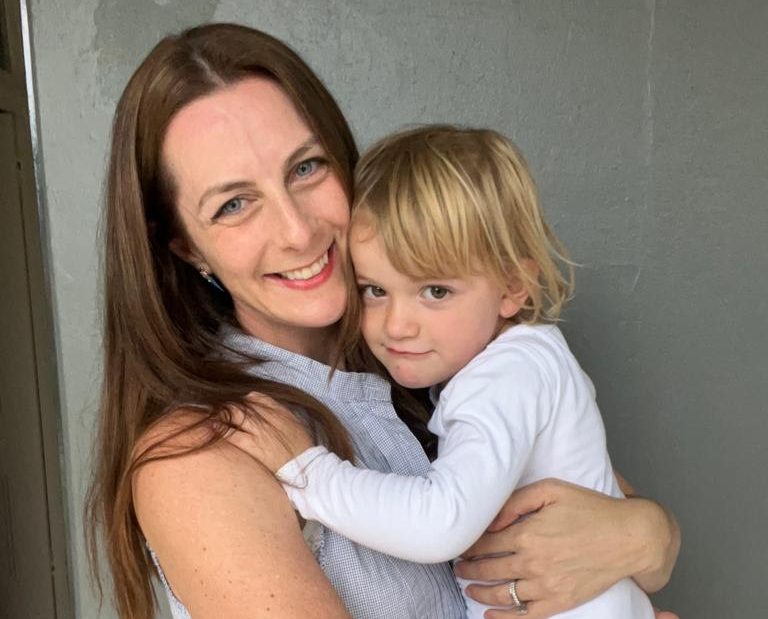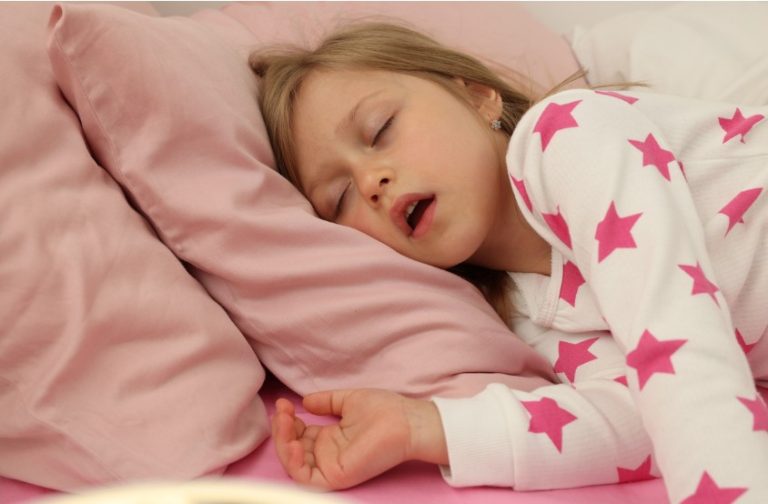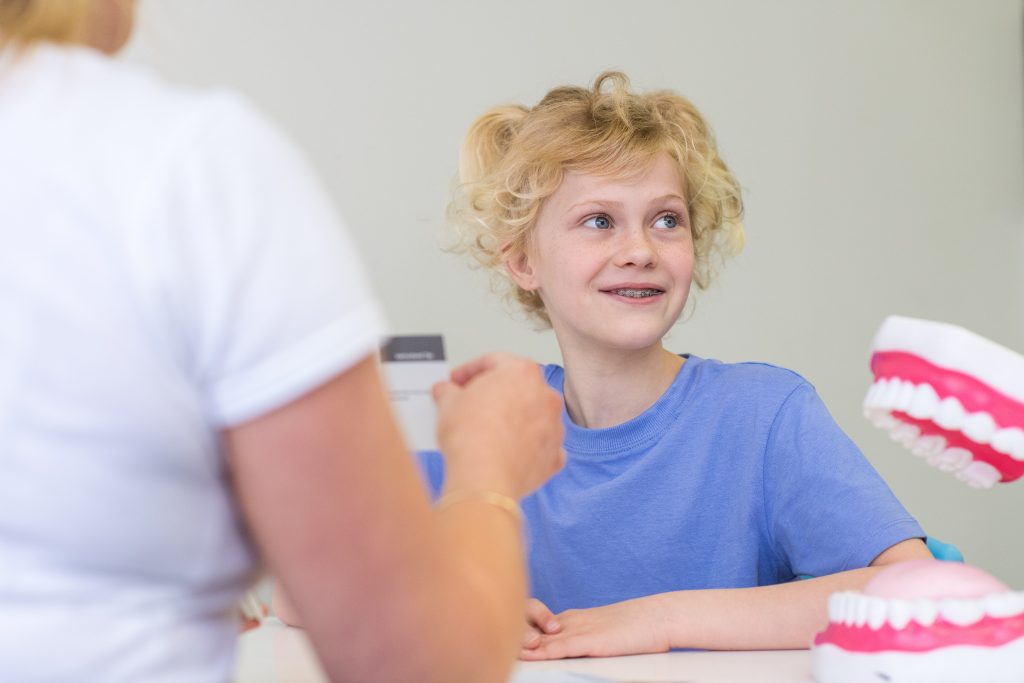
What Is ‘Normal’ Breathing?
Normal, healthy breathing should be effortless, smooth, and rhythmic, whether you’re awake or asleep. It’s virtually silent, in and out through the nose, and maintains a consistent pattern even during light physical activity.
Our noses and mouths play distinct roles in the breathing process. When we resort to mouth breathing, it can disrupt the volume, temperature, humidity, and filtration of the air we breathe. Mouth breathing can lead to over-breathing, inhaling air that’s too cold, too dry, and laden with allergens, affecting both emotional and physical well-being.
The core purpose of breathing is to maintain optimal levels of oxygen and carbon dioxide exchange within the body. When we over-breathe through the mouth, we expel excess carbon dioxide, impacting the uptake of oxygen in the lungs and throughout the body. Carbon dioxide is a natural relaxant vital for our body’s function, not something to be expelled.

What Symptoms Can Dysfunctional Breathing Cause?
Dysfunctional breathing habits can contribute to a range of symptoms, including rhinitis, sinusitis, asthma, breathlessness, atypical chest pain, snoring, sleep apnoea, insomnia, anxiety, panic attacks, irritable bowel syndrome, and fatigue.

Understanding Sleep Disordered Breathing:
Sleep disordered breathing encompasses any irregular breathing pattern during sleep, from snoring and snorting to stop-start breathing, apnea (breath cessation), or hypopnea (shallow breathing).
It’s important to note that improving daytime breathing positively influences breathing during sleep. Devices like splints or CPAP maintain oxygen levels during sleep but address symptoms rather than improving overall breathing.

Obstructive Sleep Apnoea
Many kids face the challenge of obstructive sleep apnoea. This condition significantly impacts cognitive development and mood in children. While surgical interventions to remove enlarged tonsils and adenoids may offer relief, research shows that many children continue to mouth breathe and experience sleep-disordered breathing post-surgery.
We work with children and adults to support better breathing, physical and emotional well-being. We can support those who have subtle symptoms of over-breathing, through to those with respiratory disorders such as Asthma, and even those who want to enhance their athletic performance.

Breathing-related disorders and conditions are prevalent in adults and children.
What does ‘Normal’ breathing look like?
A truly healthy person’s breathing is easy. Whether they are asleep or awake, it will be smooth and regular.
It is silent during the day, at night, and even with light activity.
It is in and out through the nose, all day and all night, even with exercise.
Nowhere in nature do we see animals breathing in through their mouth, or in through their nose and out through their mouth.
Our noses and mouths are incredibly different! When we use our mouth for breathing, it impacts the volume of air inhaled and exhaled, it impacts upon the temperature and humidity of the air we breathe, and upon filtration. When we breathe using our mouth we; over-breathe, inhale air that is too cold, too dry and full of allergens. This is why mouth breathing impacts both our emotional and physical well-being!
The main focus of breathing is to bring about the exchange of oxygen and carbon dioxide at very particular levels, for optimal function of the body. When we over-breathe by using the mouth to breathe in and/or out, we are expelling too much carbon dioxide and the uptake of oxygen (in the lungs and at a cellular level throughout the body), is impacted.
Carbon dioxide it our body’s natural relaxant – it is not something ‘bad’ to be expelled. Carbon dioxide exists within our bodies in a much higher concentration than it is found in the air that we breathe. We exhale carbon dioxide to maintain the optimum level, not to ‘rid’ our bodies of its presence.
Dysfunctional breathing habits can contribute to many symptoms, including:
Rhinitis, Sinusitis, Asthma, Breathlessness, Atypical chest pain, Snoring, Sleep Apnoea, Insomnia, Anxiety, Panic attacks, Irritable bowel syndrome and Fatigue.
What is Sleep Disordered Breathing?
The term Sleep Disordered Breathing describes any abnormal pattern of breathing occurring during sleep. Examples include; snoring, snorting, erratic breathing , stop-start breathing, apnoea (cessation of breathing) or hypopnoea (shallow breathing).
Important fact – Improving your breathing during the day has a positive effect on breathing during sleep.
Breathing supports such as splints or CPAP help maintain your oxygen levels while sleeping, but they are only treating a symptom. They do nothing to improve your breathing day or night.
Many of our paediatric clients are diagnosed with Obstructive Sleep Apnoea. This is a serious issue. Sleep apnoea in children impacts their cognitive development and mood. There are researched correlations between observation of snoring, and learning disability rates, so solving this health risk is important!
Many of our clients will have enlarged tonsils and/or adenoids, and they may have surgery to remove them to offer children urgent relief. Research in a group of children aged 7 and above has shown that as many as 50% of those children, continued to mouth breathe and experience sleep disordered breathing following the procedure. Now, we don’t know exactly what this means; It may be that 7 years of age is ‘too late’ and the surgery in fact needs to be considered even more aggressively, or it may be that other avenues should be explored before recommending surgery. Whatever the age of a patient, our job is to monitor their breathing and double check that things have improved (rather than assume they are okay just because tonsils and adenoids have been removed). We are thorough and we work closely with other professionals involved in your care.
There may be another cause of mouth breathing that we need to address, or it may just be a habit. Breathing Education and Breathing Retraining is often a critical follow up therapy for our clients post-surgery. We’ll work with you and your care team, to get to the bottom of the problem.
How long do we wait to see whether things will sort themselves out post-surgery? Around 6 months. If a surgery is scheduled and our client is waiting, we can get stuck into Breathing Education straight away! This is completely safe because we adhere to the strict principles of ensuring breathing remains comfortable and easy.
Many of us have been seen people guiding others to relax by counting in time with a beat (whether in real life or in the movies). This is NOT our approach – breathing should always be at a pace that is comfortable for you – the individual. Our breathing rate varies from day to day, and across the day. That is normal. Our Breathing Clinic will focus on supporting clients to establish breathing habits that are adaptive and optimal, for them.
We work with children and adults to support better breathing, physical and emotional well-being. We can support those who have subtle symptoms of over-breathing, through to those with respiratory disorders such as Asthma, and even those who want to enhance their athletic performance.

